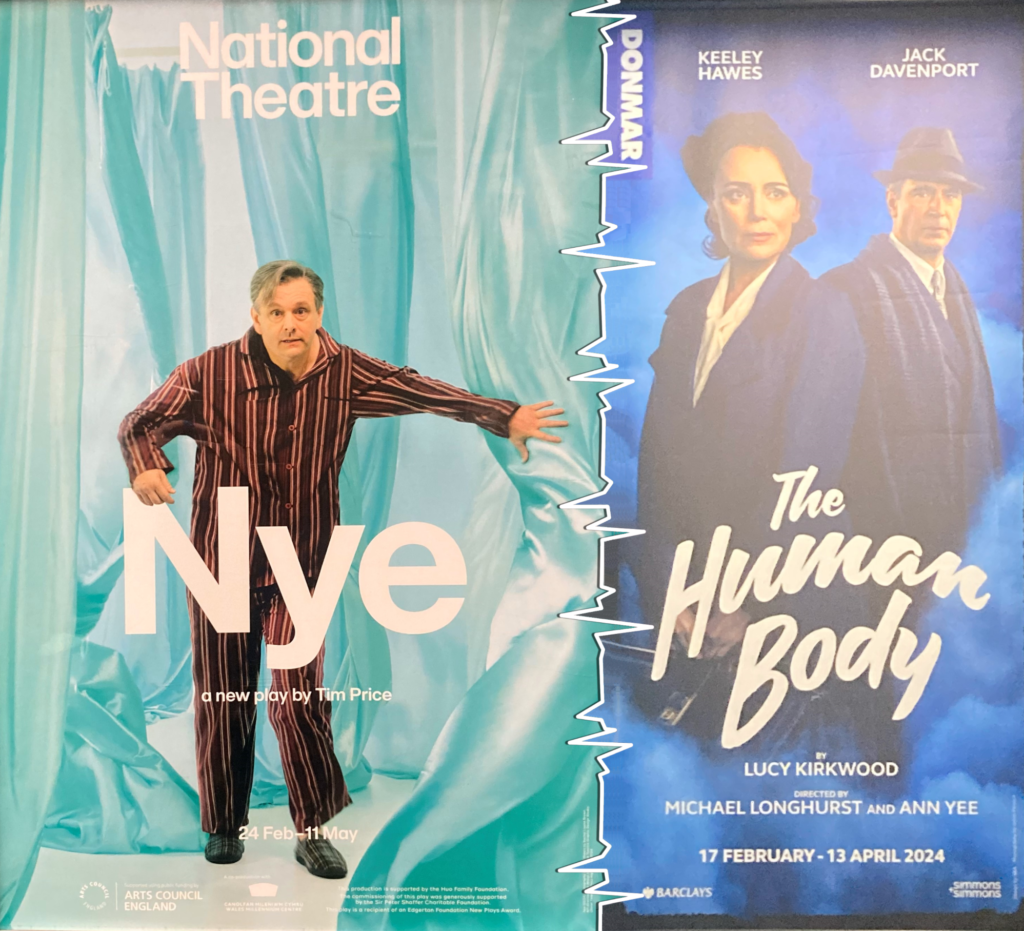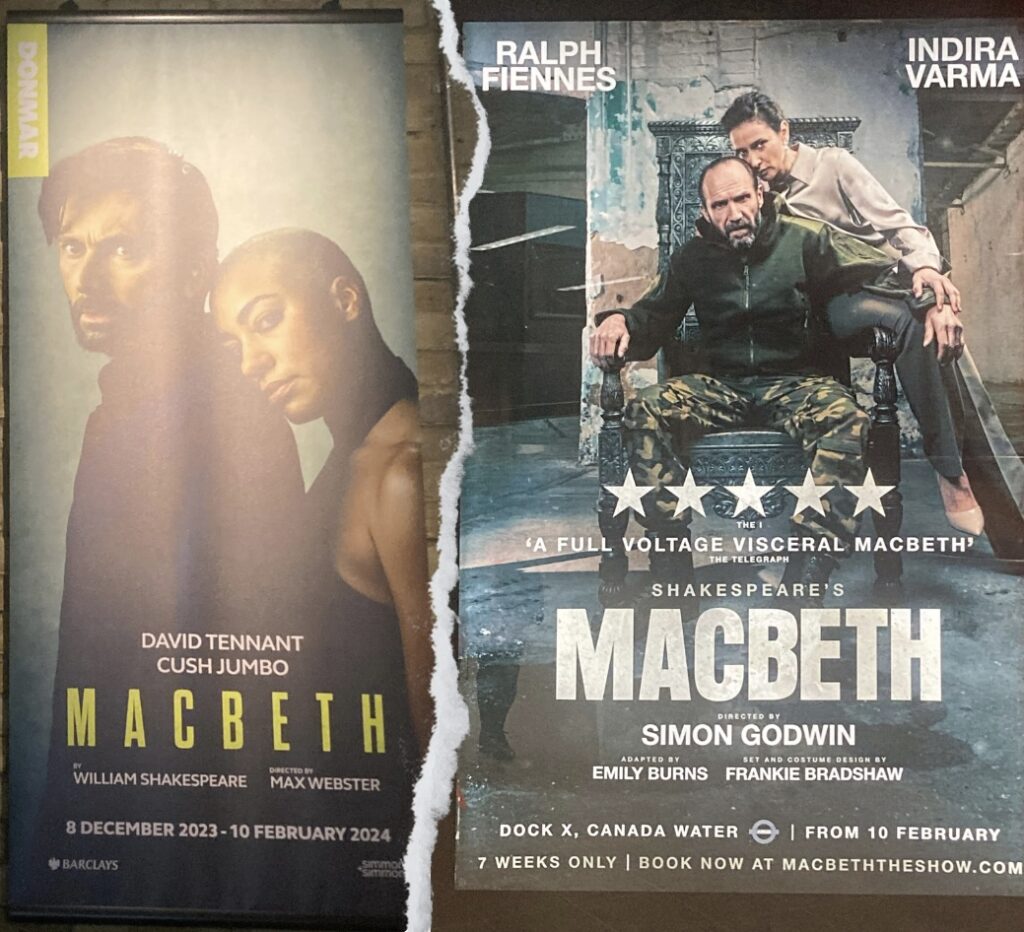
In the week when West End stars came together to perform a concert celebrating 75 years of the NHS, we’re looking back on two productions that have also clearly been programmed with this milestone in mind. In March, we had the pleasure of seeing both Nye at the National Theatre (Olivier) and The Human Body at the Donmar Warehouse. While the shows tell vastly different stories, their shared admiration for the accomplishment of the NHS shines through.
Nye, written by Tim Price and directed by Rufus Norris, stars Michael Sheen as Aneurin ‘Nye’ Bevan, the socialist MP who championed the NHS in its inception and is largely responsible for its existence, as much as any one person can be. The blurb for the play describes Bevan as ‘often referred to as the politician with greatest influence on our country without ever being Prime Minister.’
The Human Body, written by Lucy Kirkwood and co-directed by Michael Longhurst and Ann Yee, stars Keeley Hawes as the fictional Iris Elcock, a GP and aspiring MP, as well as a wife and mother (loosely based on real-life MP (and GP) Edith Summerskill, chair of the Labour Party in 1954-55). The play follows Iris as she attempts to juggle all her various responsibilities, avoid succumbing to a burgeoning infatuation, and attempt to make the move from councillor to MP in the advent of the NHS. The blurb for this play invokes Nye himself, describing Iris as ‘working tirelessly to implement Nye Bevan’s National Health Service Act and its revolutionary promise of free health care for all.’
Both plays tell human stories during the advent of the NHS, and largely focus on the personal rather than the political. This proves literally true in The Human Body where ultimately, tragically, Iris’s attempts to improve her personal life ultimately derail her career ambitions, at least with regard to politics. In one key scene, she makes the decision to miss the Labour Party conference, including the opportunity to rub shoulders with party bigwigs and witness Nye’s big speech, in order to spend a few extra fleeting moments with her new lover, who briefly convinces her there might be more to life than her jaded, unappreciative husband* and her unambitious, girly daughter.
(*During a seriously unbelievable moment, he tells Keeley Hawes she isn’t attractive to him anymore and there were gasps in the audience. It reminds one of Helen Mirren’s deadpan line about Margot Robbie in Barbie.)
The scope of Nye is larger, taking us through his whole life, from boyhood to, ultimately, his death in a hospital he helped to create. The narrative is not linear, weaving back and forth from the ‘present’ with Nye in hospital recovering from the surgery that will eventually cause his demise, to snapshots of his past, and the moments that inspired him to stand up for his socialist ideals. One scene in particular stands out as being both inspiring and gorgeously choreographed. We learn that young Nye discovered the glories of the public library, and a delightfully boyish Sheen demonstrates how he used the wealth of knowledge and indeed vocabulary at his fingertips to solve his stammer – if there’s a word he can’t say, he just finds a different one that means the same thing. It gave us chills and left us feeling inspired too.
The set of Nye, designed by Vicki Mortimer, artfully uses hospital curtains to alternately obscure and reveal the stage’s depth, allowing for an intimacy at the more poignant moments. A heartbeat projected on to the curtain signals scene changes, a return to the present and Nye’s precarious condition. He is always watched over by his wife Jennie (Sharon Strong) and his best friend Archie (Roger Evans), who has always been by his side since the stammer scene in the library and beyond, representing a kind of unconditional love.
In The Human Body, we see the unfolding of a more traditional love story but its familiarity doesn’t make it any less charming. Iris crosses paths with George Blythe (a charismatic Jack Davenport) while caring for his elderly mother, and the two find that their paths keep crossing. He is a Hollywood star, and their liaison is writ large by the clever use of camera and projection whenever George is on stage. It’s an engaging love story, though ultimately his tragic secret will come between them. The action all takes place on a small drum revolve in the Donmar’s intimate space, with careful choreography to allow for scene changes (and costume ones as well – some of the cast play up to 7 characters!) on this set designed by Fly Davis. We had the opportunity to listen to a talkback after the performance, and a key message the company wanted us to take away was just how brilliant the crew are to seamlessly hit all the marks with no actual glow tape and all while stepping on and off the revolve. We witnessed a sweet moment during the conversation when an audience member asked Keeley Hawes how she approached the character of Iris. Her reply was that Iris leapt off the page and she didn’t feel the need to do much to get into her. The audience member commented that that must mean Ms. Hawes took to the part effortlessly. While she demured, Jack Davenport was quick to jump in with a fervent affirmative that she is just naturally brilliant. We love to see admiration between co-stars!
A source of tension for Iris in her relationship with her husband Julian (Tom Goodman-Hill) is the fact that, though they’re both GPs and he ostensibly supports her aspirations for a political career, he has spoken out against the NHS in his position as a physician. This ideological opposition catches Iris off guard and becomes a spur for her in her work to make the NHS a reality. Much is also made in the latter stages of Nye about the fight to get the doctors on side, with sinister projections at the top of the stage representing this oppositional body. Despite the depiction of Nye returning to argue with the doctors multiple times, we came out of both plays without a clear idea of how that argument was ever resolved.
The endings of both plays were both very moving. Nye concludes with his death, which has been coming. It plays out, of course, under the watchful eyes of Jennie and Archie, but the scope is thrown wide as we see all the infrastructure that has cared for Nye as he meets his end, depicted literally with nurses handing Sheen’s body between them in a beautifully choreographed sequence. We were moved to tears, especially when thinking of all the souls who perished during Covid with only an overworked but ever-so-dedicated nurse at their side. The Human Body concludes with Iris, her new relationship over and her political career in ruins, resolve to get on with her life and calmly call for her next patient at her GP surgery. As she does so, the cameras, which throughout have faced her and George and depicted them in black and white, pan to the audience in full colour to show that we are the beneficiaries of the system she helped to fight for. This was another impactful ending, and certainly made us reflect on our appreciation for the NHS and for those who fought to bring it into existence.
Both these productions were thoughtful, artfully constructed, and made us think and feel a lot. We only wonder if they maybe could have gone a bit further, given the dire straights the NHS is currently in with the current government doing what it can to defund and dismantle it. In us it was preaching to the choir so we saw the love and appreciation there, but could these productions have championed the NHS to the non-believers and done more to show just how difficult it was to establish, and to ask what we would do without it? We take it for granted at our peril.
Best of luck to the company of The Human Body as their run finishes this weekend. Nye runs until 11th May.



